‘I don’t do violence,’ says Henry (Sean Harris), twice over, in the opening act of The Stranger (Thomas M Wright, 2022). It’s a spoken declaration made in the unspoken hope of moving on from a violent history. This attempt to distance himself from the past is literalised in his move from Queensland – where, we discover, he incurred several arrests and indictments – to Western Australia, about as far across this country as one man could go.
Henry’s hopeful – albeit duplicitous – edict is an emblematic phrase for a film that itself doesn’t ‘do violence’, but instead studies its pernicious effects: the way the repercussions of such an act can linger, poisoning lives, drawing others into its trauma. ‘The reason for the film is violence, but that isn’t its subject,’ Wright explains. ‘Its subject is the connections between people, and even the fabric of society.’
Wright’s follow-up to his impressive debut feature, Acute Misfortune (2018),[1]See Elizabeth Flux, ‘Paint and Suffering: The Delicate Art of Acute Misfortune’, Metro, no. 199, 2019, pp. 20–5, available at <https://metromagazine.com.au/paint-and-suffering/>, accessed 1 January 2023. is a fictional work inspired by Kate Kyriacou’s 2015 non-fiction book The Sting: The Undercover Operation That Caught Daniel Morcombe’s Killer.[2]Kate Kyriacou, The Sting: The Undercover Operation That Caught Daniel Morcombe’s Killer, Echo Publishing, South Melbourne, Vic., 2015. It isn’t about the 2003 incident in which the Queensland schoolboy vanished, but the years-later police operation that transformed the missing person investigation from a cold case to one that elicited a confession from the man responsible.[3]See ‘The Sting That Caught Daniel’s Killer’, SBS News, 13 March 2014, <https://www.sbs.com.au/news/article/the-sting-that-caught-daniels-killer/cd6o6se5o>, accessed 19 October 2022.
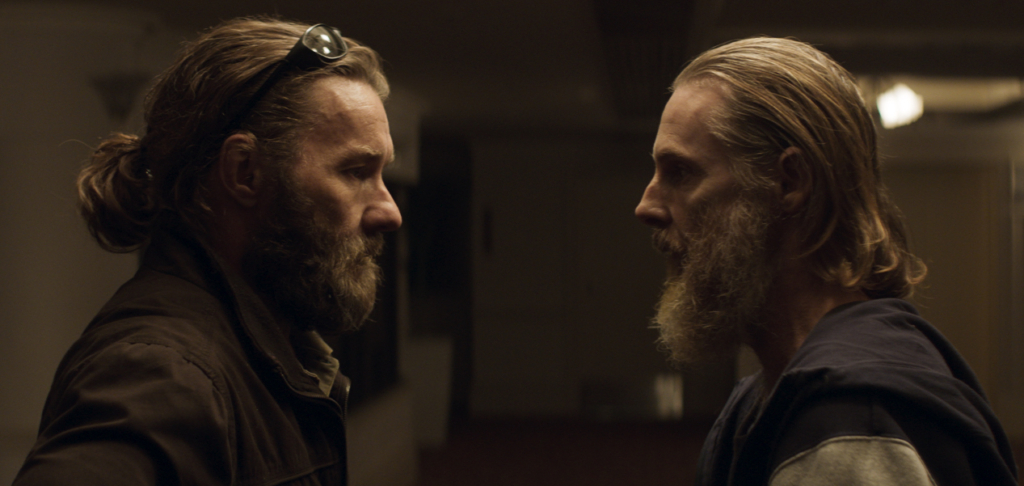
The Stranger is a movie about violence that features not a single moment of on-screen violence. ‘This film begins after the violence has taken place, and is an attempt to find resolution without violence,’ Wright says. It chronicles twin police operations that unfold, side by side, at slightly different temporal rhythms. While it’s a familiar sight for crime movies to end in an act of explosive violence – the horrors of a violent act corrected by its repetition on a grander scale, drama’s favourite form of ultimate justice – here, the case culminates with an unnamed, unknown member of a search party simply raising their hand, signifying evidence found and the beginning of a new legal process.
This absence of violence conveys the sense of remove in a missing person case – one that, in The Stranger, takes place far from the act in question, proceeding into a void of information. ‘There is no evidence; there is no body; there is no crime scene. There’s just nothing,’ Wright says. ‘And into that vacuum, people project meaning, bring their own associations, create their own narratives.’
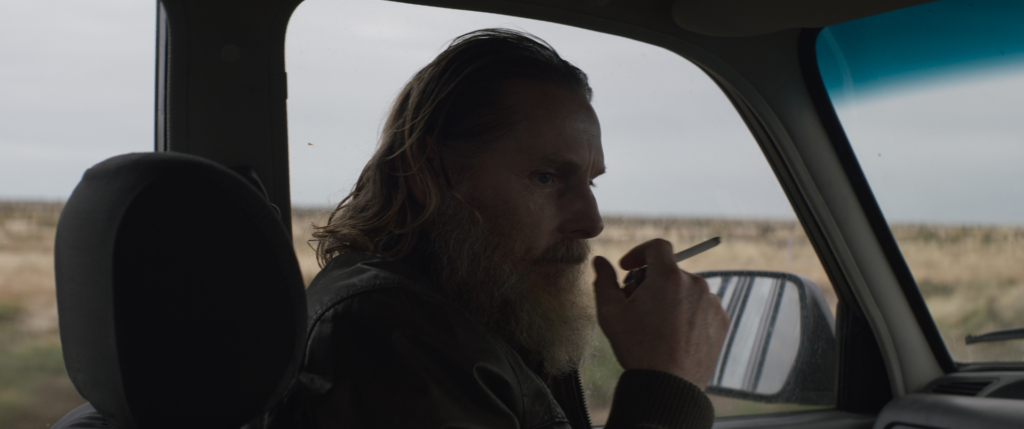
Wright cites the stories we tell, from fiction to fables, law to religion, as being a human way of trying to make meaning out of chaos and ‘our own capacity for violence’. And the fact that he’s telling this story at all – making a motion picture out of a well-known, much-covered local tragedy – has, as with Nitram (Justin Kurzel, 2021) before it,[4]See Anthony Carew, ‘Journey into Darkness: Justin Kurzel and Shaun Grant on Nitram’, Metro, no. 211, 2022, pp. 8–15, available at <https://metromagazine.com.au/journey-into-darkness/>, accessed 1 January 2023. elicited familiar condemnations.[5]See Laura Lavelle & Jemima Burt, ‘Filmmakers Behind The Stranger, Inspired by Daniel Morcombe Case, “Callously Disrespectful”, Parents Say’, ABC News, 15 July 2022, <https://www.abc.net.au/news/2022-07-15/qld-daniel-morcombe-murder-denise-morcombe-movie-the-stranger/101238930>, accessed 14 October 2022. But The Stranger isn’t about the people involved in the case – its two central figures bear only a loose resemblance to their real-life counterparts – and it’s about as far away from sensationalising as you can get.
Wright’s hope was to make a movie not simply about one act of violence, but exploring its broader impact. It’s a product, the filmmaker says, of a nation that is ‘defined by hidden violence’. His film is, as such, less part of the ‘crime movie’ canon than a continuation of an Australian artistic tradition – one running from Sidney Nolan to Helen Garner and Nick Cave – examining the darkness lingering beneath our country’s sunburnt surface.‘In this environmentally beautiful nation, there’s this preoccupation,’ Wright muses. ‘We can trace it back to the fact that there’s something unreconciled in our history and our identity, and then in ourselves. There’s something caught in our teeth, and we can’t get it out.’
Both of Wright’s films are set in landscapes defined by violence, and revolve around the intimate relationship between two men. Like The Stranger, Acute Misfortune was also based on a real-life story: in this case, about a young journalist, Erik Jensen (Toby Wallace), being drawn into the disturbing world of macho artist Adam Cullen (Daniel Henshall). At one point therein, the latter comments, ‘Violence is a constant in human life – there’s nothing we can do to stop it.’ But where that debut was about murky moral greys, messy relationships and sticky conflicts, The Stranger is starker, clearer, more black-and-white: ‘Mark’ (Joel Edgerton), an undercover operative whose real name we never learn, hopes only to bring down Henry, a criminal who’s committed an act of genuine evil.
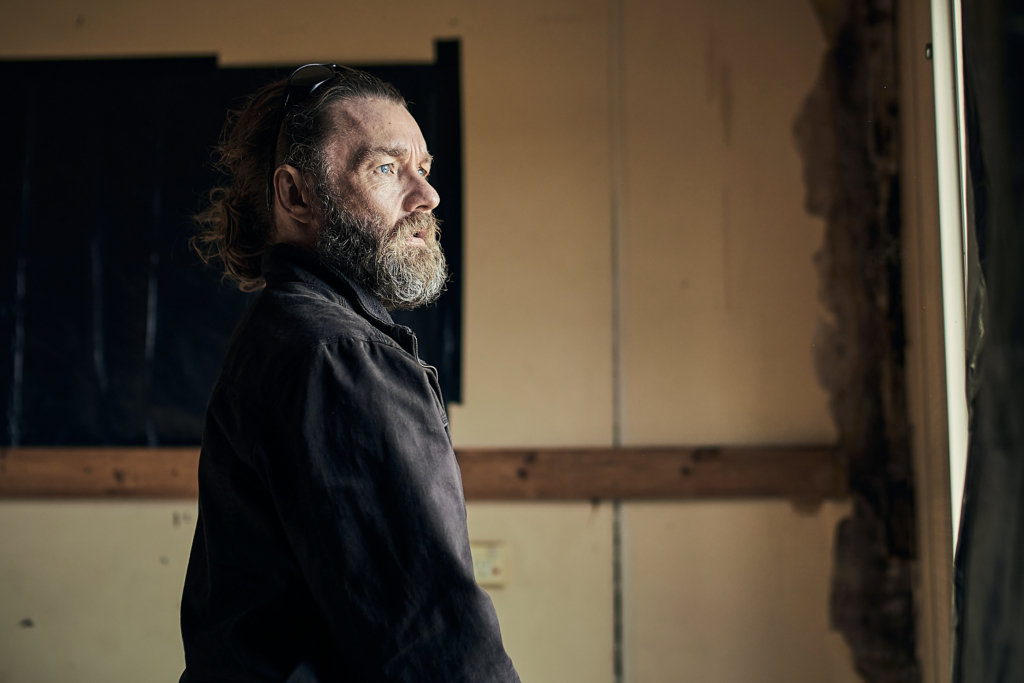
And, in turn, whereas Acute Misfortune was defined by its boxy, Academy-ratio presentation and often flat visual style, The Stranger is a widescreen, anamorphically lensed work whose thematic darkness is conveyed in its many stunning low-light frames. Drawing influence from the work of cinematographers Gordon Willis and Conrad Hall, director of photography Sam Chiplin employed a visual palette thick with – as Wright puts it – ‘inky, velvety, deep blacks’, using darkness to create mood and to direct the viewer’s gaze within these oft-minimalist frames.
That much of the drama takes place at night makes The Stranger feel like a descent into both a criminal underworld and the darkness at the heart of these stolen lands; but, Wright points out, this choice also has real-life resonance.
That much of the drama takes place at night makes The Stranger feel like a descent into both a criminal underworld and the darkness at the heart of these stolen lands; but, Wright points out, this choice also has real-life resonance: ‘In [undercover] undertakings like this, meeting at night in these kinds of badlands can [have] a practical application – keeping [suspected] individuals isolated, and away from communities.’
Though the filmmaker says he ‘can’t talk about the way the film was prepared and researched’, the veracity of The Stranger’s run-of-the-mill depictions of the grunt work of a missing person case serves as a counterbalance to the film’s otherwise smouldering mood and symbolist art-movie flourishes: the recurring vision of a menacing black peak; composer Oliver Coates’ discordant score (which, Wright hopes, ‘takes place in your stomach’); the incredible and unnerving sound design. These elements aren’t, the director says, meant to ‘be literally understood or comprehended’, instead lingering as the ineffable, the cinematic. This makes for a kind of bifurcated procedural: one part forensic, one part psychological.
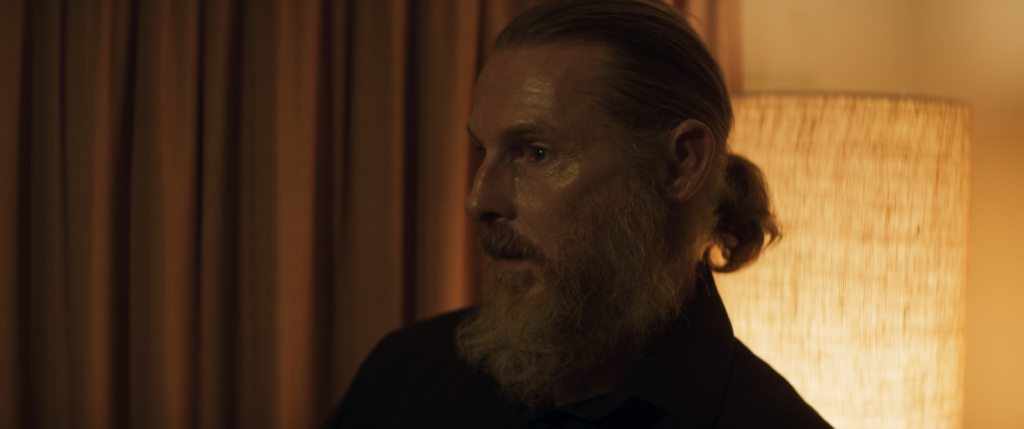
The undercover operation finds Henry making acquaintances with ever-escalating ranks of shadowy figures in a supposed criminal network: from friendly Paul (Steve Mouzakis), whom he meets by ‘chance’ on an interstate bus in the film’s opening minutes, to charismatic Mark, the unnamed ‘Heavy Man’ (Mike Foenander) and the enterprise’s ‘cleaner’ (Matthew Sunderland). The entire thing is a sting, its success based on Mark’s ability to create a connection with Henry: to foster friendship and, in turn, trust.
‘The mandate was closeness – to become his closest friend,’ Wright explains. The filmmaker visually depicts this cultivated closeness by having the pair – each bearded and ponytailed – look increasingly similar as the film progresses (The Stranger’s poster art riffs on this visual, morphing the two characters’ faces together into one visage). Each is, in their own way, a liar: Henry, living a life in deliberate denial of his past; Mark, undertaking a professional deceit. They’re two sides of the same relationship, but they have two sides to themselves, too: mirror images in duplicate.
A familiar drama of the undercover movie finds a cop’s in-too-deep activities taking a toll on their personal life, with their proximity to – and embodiment of – criminality coming home to roost, destabilising any notion of domestic stability. That plays out in scenes wherein Mark looks after his young, unnamed son (Cormac Wright) in custody-shared weekend stints, this lifeline to the real world feeling increasingly precious and perilous as he grows closer to a man he suspects of having abducted and murdered a child. Descending into the nocturnal realm of the sting, he grows increasingly agitated, looking increasingly haunted.
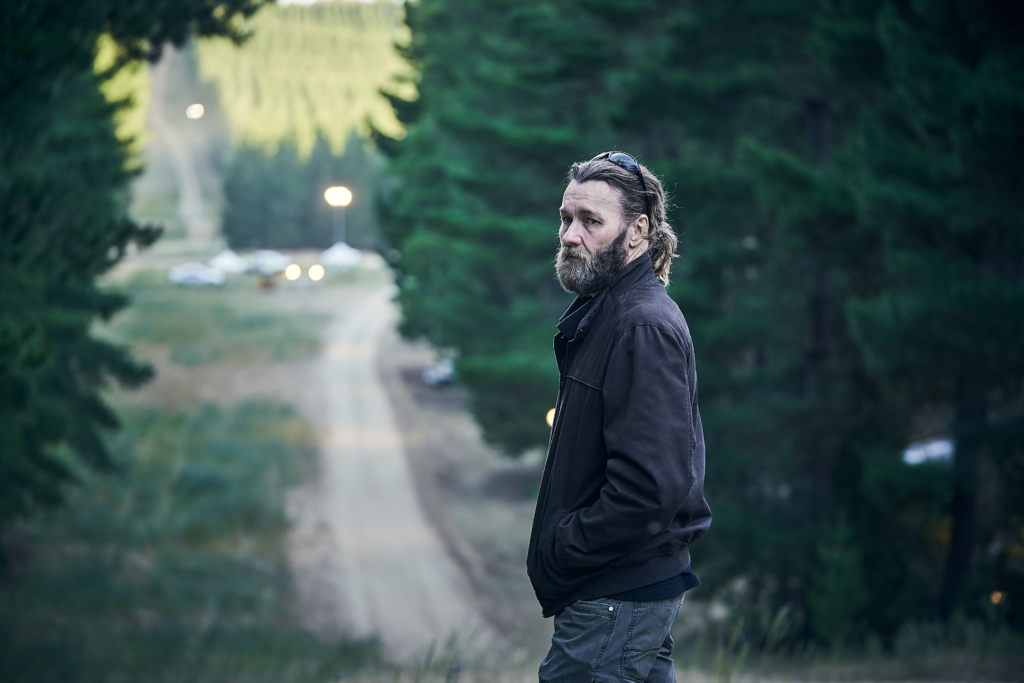
‘I’m fascinated by people that operate at a level that allows us to not have to think about the darker things [in society],’ Edgerton recounts in The Stranger’s press materials. The actor and producer wanted to explore the psychological complexity of a grand, years-long undertaking that found an officer ‘walking side by side, day to day, with somebody that is actually arguably evil’.[6]Joel Edgerton, quoted in ‘About the Production’, Serpentine Film Holdings, Create NSW & Screen Australia, The Stranger production notes, 2020, p. 4.
Wright sees the film as not yet another portrait of the mind of a killer, but a profile of ‘the people who have to work in direct contact with violence, with that darkness, and have to adapt their lives to it’. Mark’s entire life has become this case, this hopeful attempt to bring about justice. But the officers pursuing Henry from a distance grow just as consumed, desperate to establish facts and find glimmers of truth in the void of the missing person case.
Set against this long con of the sting, we have the short, sharp work of an investigative task force, whose probe proceeds according to a tighter timeframe, eventually intersecting with the undercover operation. This investigation is depicted almost entirely during office hours, under the buzzing neon lights of police station meeting rooms. Detectives Ikin (Fletcher Humphrys) and Rylett (Jada Alberts) – the latter the only woman in this macho world – are as committed to the case as Mark, but their work is less glamorous, more logical, as they attempt to pin down ever-more-precise timeframes regarding the abduction and Henry’s whereabouts.
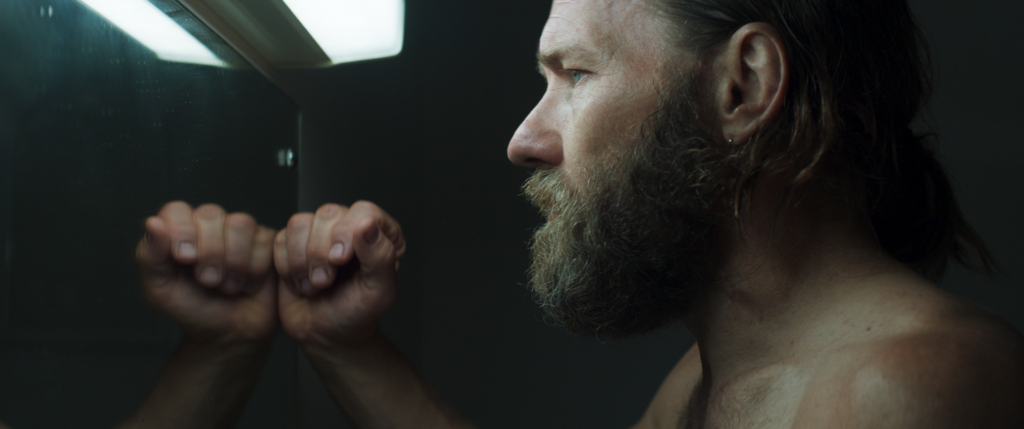
The meticulously assembled film features a complex confluence of timelines that, through Simon Njoo’s editing, eventually converges with a sense of elegance – the procedural turned artful, gripping. After so long suspended within the film’s tense, slow-burning minimalism, the sting eventually locks into place: the police recount Henry’s suspected crimes before he himself does, lured by the promise that the faux-criminal enterprise he’s entered can erase any past mistakes, as long as he comes clean about them. This is where The Stranger bumps up against the reality of the case that inspired it, courting the controversy of dramatising real pain.
Wright admits that, when Edgerton approached him about potentially adapting The Sting, he was ‘terrified’ by the prospect. ‘I was afraid of the darkness of it. I was afraid of the material itself. I was afraid of looking into a part of human nature that couldn’t be more frightening,’ he recalls. Though The Stranger is ‘obviously based on a particular case and a particular incident’, its perspective is broader. ‘By fictionalising the film,’ Wright describes, ‘I felt like I was taking on violence as a subject more broadly, almost more as a phenomenological thing.’ Violence looms over the whole of the film like a spectre, infecting everyone within. In making The Stranger, the filmmaker chose not to keep that at a distance, but to bring it close to home. Wright cast his own son as Mark’s on-screen child, lending dual currency to the palpable parental anxiety depicted in the scene in which the boy ‘disappears’ into the (cinematic) darkness outside his father’s house.
Even those not directly involved in an act of violence can be hugely affected by its legacy: the disappearance of a child stokes parental fears; criminal acts shake a community’s sense of safety; the death of women in acts of domestic violence reflects the failure of a culture and its legal system to protect its vulnerable members. ‘We live in a country that’s marked by a history of violence,’ Wright says. ‘When stories like this happen, they change our relationship to one another; they change our relationship to the idea of strangers. They have a real effect on us.’
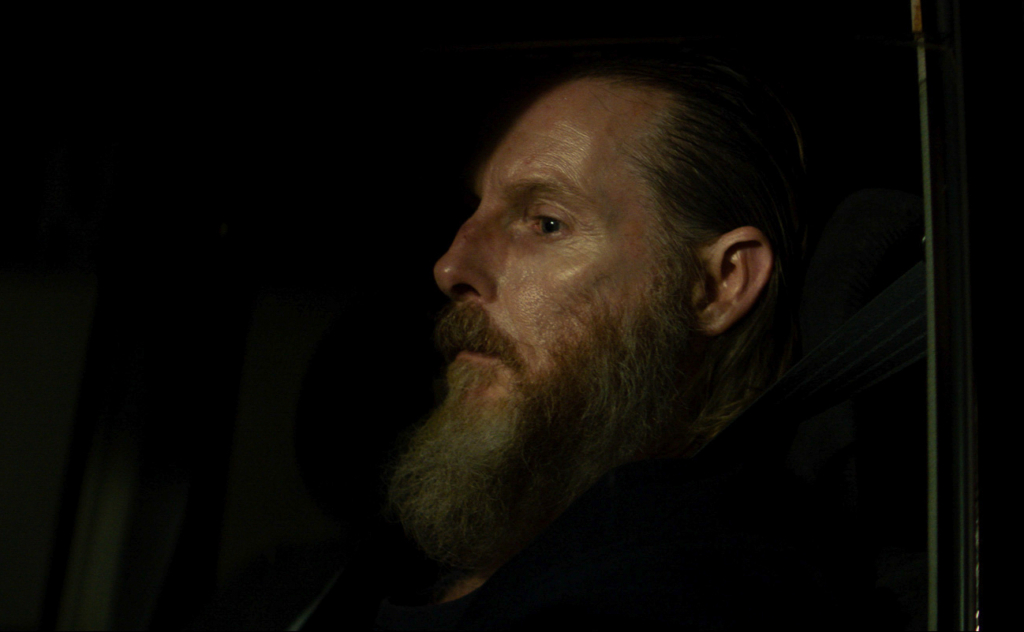
The Stranger – whose title, Wright offers, could refer to Henry, to the unnamed officer pretending to be Mark, to the unknown victims of distant crimes, or to our own Jungian shadow selves[7]See Christopher Perry, ‘The Jungian Shadow’, Society of Analytical Philosophy website, 12 August 2015, <https://www.thesap.org.uk/articles-on-jungian-psychology-2/about-analysis-and-therapy/the-shadow/>, accessed 19 October 2022. – is ultimately asking the question: Who takes responsibility for violence in our society? Its drama valorises those who seek to wrestle with the burden, who work to find a sense of eventual closure for families stranded in the purgatory of the unknown. But it also indicts Australian society as a whole, reflecting a nation that’s failing to grapple with the violence of its founding – and to curb the violence in its present.
Endnotes
| 1 | See Elizabeth Flux, ‘Paint and Suffering: The Delicate Art of Acute Misfortune’, Metro, no. 199, 2019, pp. 20–5, available at <https://metromagazine.com.au/paint-and-suffering/>, accessed 1 January 2023. |
|---|---|
| 2 | Kate Kyriacou, The Sting: The Undercover Operation That Caught Daniel Morcombe’s Killer, Echo Publishing, South Melbourne, Vic., 2015. |
| 3 | See ‘The Sting That Caught Daniel’s Killer’, SBS News, 13 March 2014, <https://www.sbs.com.au/news/article/the-sting-that-caught-daniels-killer/cd6o6se5o>, accessed 19 October 2022. |
| 4 | See Anthony Carew, ‘Journey into Darkness: Justin Kurzel and Shaun Grant on Nitram’, Metro, no. 211, 2022, pp. 8–15, available at <https://metromagazine.com.au/journey-into-darkness/>, accessed 1 January 2023. |
| 5 | See Laura Lavelle & Jemima Burt, ‘Filmmakers Behind The Stranger, Inspired by Daniel Morcombe Case, “Callously Disrespectful”, Parents Say’, ABC News, 15 July 2022, <https://www.abc.net.au/news/2022-07-15/qld-daniel-morcombe-murder-denise-morcombe-movie-the-stranger/101238930>, accessed 14 October 2022. |
| 6 | Joel Edgerton, quoted in ‘About the Production’, Serpentine Film Holdings, Create NSW & Screen Australia, The Stranger production notes, 2020, p. 4. |
| 7 | See Christopher Perry, ‘The Jungian Shadow’, Society of Analytical Philosophy website, 12 August 2015, <https://www.thesap.org.uk/articles-on-jungian-psychology-2/about-analysis-and-therapy/the-shadow/>, accessed 19 October 2022. |





